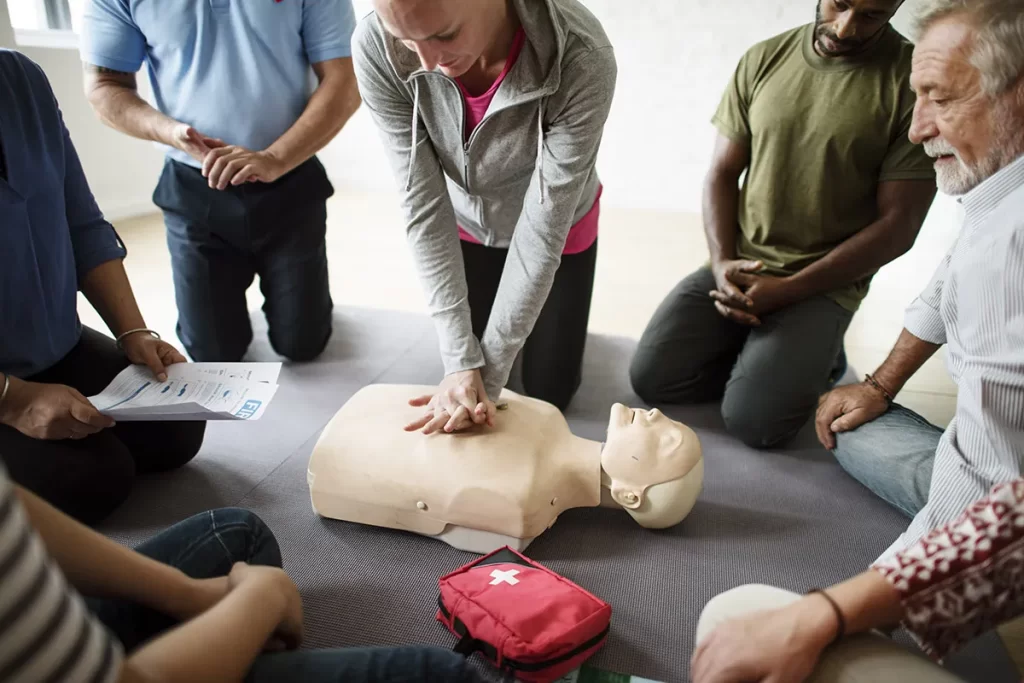Learning CPR (Cardiopulmonary Resuscitation) and first aid can make the difference between life and death in emergency situations. Whether you’re a parent, employee, or community member, acquiring these critical skills empowers you to act quickly and effectively during medical emergencies.
If you’ve signed up for a course like Premiers Soins CPR and first aid training, it’s essential to prepare properly to get the most out of your learning experience. This guide will walk you through key steps to ensure you’re ready, confident, and equipped for your training.
1. Understand the Importance of CPR and First Aid Training
Before attending the course, it’s helpful to understand why these skills are vital:
- CPR can double or triple survival rates in cases of sudden cardiac arrest.
- First aid skills help manage injuries like burns, fractures, bleeding, and choking before professional help arrives.
- Immediate response reduces complications and long-term health risks for victims.
This knowledge will motivate you to engage fully during the training.
2. Know What to Expect During the Training
Key Topics Covered:
- CPR techniques for adults, children, and infants
- How to use an AED (Automated External Defibrillator)
- Managing choking emergencies
- Wound care, bandaging, and controlling bleeding
- Recognizing and responding to heart attacks, strokes, and allergic reactions
3. Dress Comfortably for Physical Activities
CPR and first aid courses involve practical exercises such as:
- Kneeling on the floor to perform chest compressions
- Practicing recovery positions
- Simulating emergency scenarios
What to Wear:
- Comfortable clothing (e.g., workout attire)
- Flat, supportive shoes
- Avoid restrictive outfits or heavy accessories
Being physically comfortable will help you focus on the training activities.
4. Bring the Essentials
Make sure to come prepared with:
- Notebook and pen for taking notes
- A water bottle to stay hydrated
- Snacks or light refreshments (if breaks are provided)
- Any required course materials or manuals provided in advance
Some courses may require you to bring personal protective equipment (PPE) like masks or gloves, especially for hygiene purposes during practice.
5. Familiarize Yourself with Basic Concepts
While prior knowledge isn’t mandatory, having a basic understanding can help:
- Watch introductory CPR videos online.
- Review common first aid procedures such as treating cuts or burns.
- Understand the importance of the “chain of survival” in cardiac emergencies.
This will give you a head start and make the training feel less overwhelming.
6. Be Ready to Participate Actively
First aid and CPR are hands-on skills. The more you practice during training, the more confident you’ll be in real emergencies.
- Engage in group activities and simulations.
- Don’t hesitate to ask questions if something is unclear.
- Practice techniques multiple times to build muscle memory.
Remember, the goal is not just to pass the course but to be prepared to save lives when needed.
7. Prepare Mentally for Emergency Scenarios
CPR and first aid training can involve realistic role-playing scenarios that simulate high-stress situations, such as:
- Responding to a person having a heart attack
- Managing severe bleeding after an accident
- Handling unconscious victims
Approach these scenarios with an open mind. They’re designed to help you remain calm and effective in real-life emergencies.
8. Know the Certification Requirements
Most CPR and first aid courses offer certifications valid for a specific period, often two to three years.
- Check if your course meets workplace or professional requirements.
- Understand the renewal process to keep your certification current.
- Some courses may require a written test and a skills assessment at the end.
9. Common Myths About CPR and First Aid Training
Myth: CPR is too complicated for the average person.
Fact: Anyone can learn CPR with proper training. Simple chest compressions can save lives.
Myth: First aid is only useful in severe emergencies.
Fact: First aid is also critical for minor injuries, preventing them from becoming more serious.
Myth: Only medical professionals need CPR training.
Fact: Bystanders are often the first to respond in emergencies, and their actions can be life-saving.
10. After the Course: Keep Practicing Your Skills
Once certified, it’s important to:
- Review your training materials regularly to keep your knowledge fresh.
- Practice CPR techniques on training mannequins if you have access.
- Consider refreshing courses every year, even if your certification is still valid.
The more you practice, the more confident and prepared you’ll be during an actual emergency.
Conclusion
Preparing for CPR and first aid training is the first step toward becoming a lifesaver. Whether for personal knowledge or professional requirements, these skills are invaluable in emergencies.

